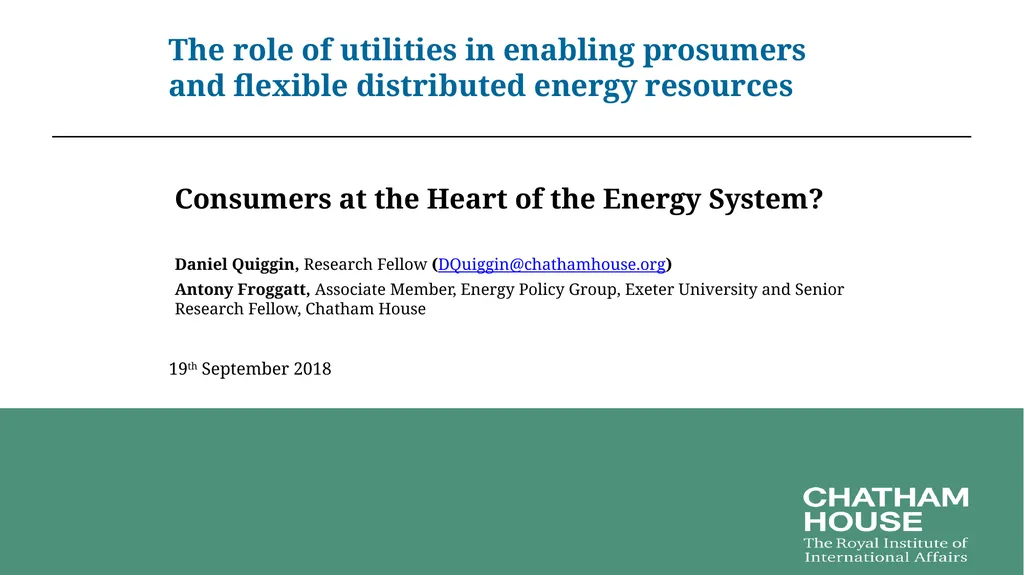
The role of utilities in enabling prosumers and
Author: myesha-ticknor | Published: 2025-05-29
Description: The role of utilities in enabling prosumers and flexible distributed energy resources Consumers at the Heart of the Energy System? Daniel Quiggin, Research Fellow (DQuigginchathamhouse.org) Antony Froggatt, Associate Member, Energy Policy
Download Presentation
Download the PPT/PDF: Download
Transcript:
Loading transcript…